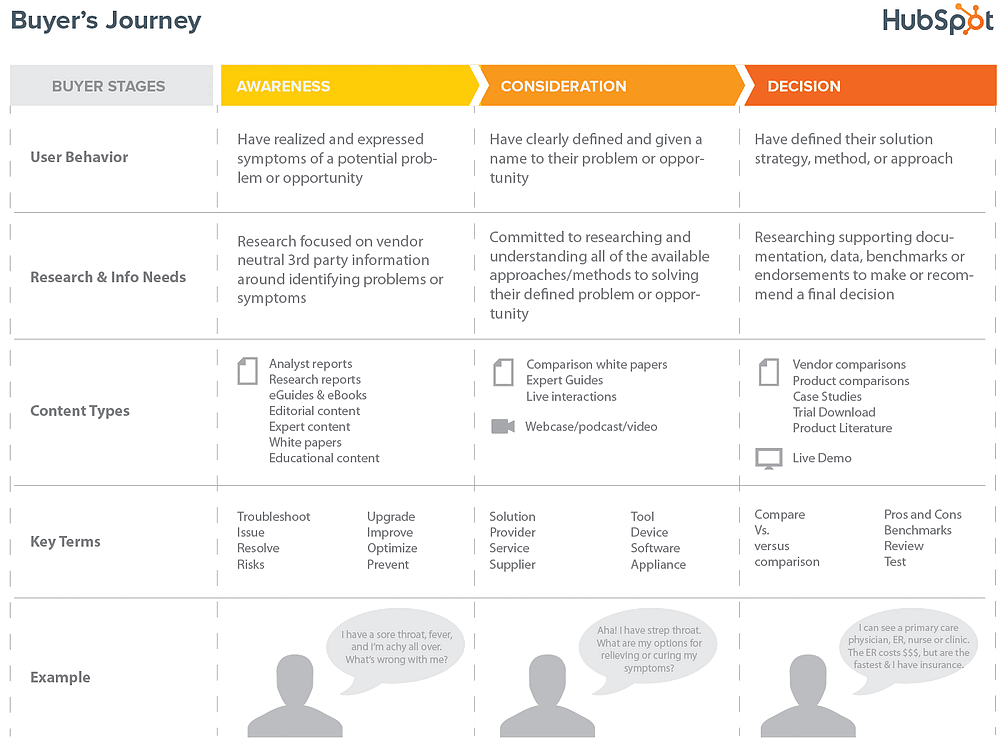Digital marketing is critical to successful demand generation these days, in part because it is so effective, scalable and cost effective. As you review and improve your digital efforts, or as you start thinking about investing more in your digital strategy, take a moment to be sure these problem areas are not plaguing your hard work.
1. Confusing digital delivery with digital strategy
Your digital marketing plan (how you will deliver the content, to whom, and how) needs to be grounded in a clear purpose.
- Are you seeking to educate certain customers and buyers on your product?
- Are you trying to attract them to your website?
- Are you wanting to generate more leads from paid online advertising or content marketing efforts?
- Or obtain a person's email address or other information for outbound marketing efforts?
Many digital marketers focus on delivering frequent digital messages, rather than focusing on what they are saying in the first place.
Pro tip: Have a plan before you act. Setting SMART goals will dictate where to focus your efforts and prevent wasting time on things that don't support goals.
2. Not sharing data between marketing and sales
Marketing and sales still operate in a vacuum despite the wonderful tools that are available today to help them share data.
For example, marketing produces promotional messages to get prospects to the company website. But sales doesn't know what web pages a prospect visits before picking up the phone. When a sales rep calls on a prospect, they don't share their notes with marketing to help marketing understand more about the customer.
Pro tip: It doesn't have to be this way. Sales and marketing intelligence can be shared easily across marketing and sales with HubSpot CRM, which is free.
3. Forgetting to put your ideal customers first
All solid marketing efforts start with a clear profile of who your major customers and buyers are. If there are other buyers you know have needs that your product or solution can meet, investigate them. Understand them. Get inside their heads. Create content for them as if they were there, sitting with you, waiting to see it.
You also want to consider influencers, who are vital to the B2B buying journey. Knowing their needs will help both marketing and sales.
Pro tip: After you've done your customer research, map content and other assets to the buyer's journey. See an example below (you can click it for the printable PDF version):
4. Selling customers your way rather than meeting their needs
When you are researching buyers and customers, and you have a clear idea of what they need, be sure to research how they typically meet those needs. Just because your company operates in a small niche doesn't mean that you don't have competition. There are suitable alternatives to your product or service, including making no purchase decision at all.
How can you sway a potential buyer to consider your solution?
You also have to consider how your message will best reach a target audience. Do they want information in blog format or video format? Printable form they can share with decision makers?
In digital marketing, it is possible for you to find this out by surveying them, asking them, and making detailed notes during the sales process. You can also find out if online marketing is working for your competitors.
Pro tip: Your customers are in control of the sales process. They research online, so help your customers and your sales team by giving them helpful information in various formats.
5. Not taking time to track your progress
In the hustle of the day-to-day, it can be hard to find time to stop and evaluate progress. But you should on a regular basis. So what should you measure?
Going back to your SMART goals will shed some light on what kinds of metrics will be most meaningful. Are your goals to generate traffic to your website? Increase leads from your website? Get more email subscribers? Then be sure to measure the metrics that are associated with them.
For example, if your SMART goal is to increase the visitor-to-lead ratio on your website by 15% by the end of next year, then not only should you be tweaking design and content on your website, but you should be measuring your conversion rate.
Pro tip: Always tie your performance back to your SMART goals every month. By looking at progress to goal monthly, you'll be able to quickly make adjustments and course correct if things get off track.
By keeping these potential pitfalls in mind, you will keep yourself on the path to digital marketing success!
Share & Prove You Found It First
The Digital Slate
Looking for timely digital marketing and sales insights to grow your business? Subscribe to our monthly digital newsletter for marketing professionals.
Subscribe



